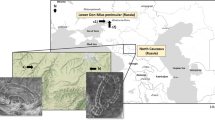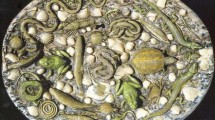Abstract
The Neolithic period Chassey culture in southern France from 4200 to 3500 Cal. BC developed a specialized lithic technology for flint bladelets that used a heating process as an essential part of the production. Experimental archaeology demonstrated that the heating should take place at low temperature somewhere around 250°C. To identify and quantify the physical transformations of flint at low temperature, laboratory and synchrotron experiences have been carried out on a set of heated Barremo-Bedoulian flint samples. According to our measurements, this flint consists of a nanocrystalline matrix of quartz and moganite. Evolution of mesoporous structure was observed during heat treatment. The flint transformed between 200-300°C, resulting in a reduction in the size and volume of porosity. The densification of flint is linked to changes on the nanocrystalline grain boundaries, and it is thought to have a direct impact on the improved mechanical properties from the Chassey culture lithic productions.
Similar content being viewed by others
References
S.A. Parfitt, R.W. Barendregt, M. Breda, I. Candy, M.J. Collins, G.R. Coope, P. Durbidge, M.H. Field, J.R. Lee, A. M. Lister, R. Mutch, K.E.H. Penkman, R.C. Preece, J. Rose, C.B. Stringer, R. Symmons, J.E. Whittaker, J.J. Wymer and A. J. Stuart, The earliest record of human activity in northern Europe. Nature 438 (15) pp. 1008–12 (2005).
V. Lea, Raw, Pre-heated or ready to use: discovering specialist supply systems for flint industries in mid-Neolithic (Chasséen) communities in southern France. Antiquity 79 pp. 51–65 (2005).
Binder D., 1984. Systèmes de débitage laminaire par pression : exemples chasséens provençaux. in Préhistoire de la Pierre Taillée II, économie du débitage laminaire (Table ronde de technologie lithique 3; Meudon-Bellevue octobre 1982). p. 71–94. CREP, Paris.
Pelegrin J., 1988. Débitage expérimental par pression; “du plus petit au plus grand”. In: Tixier J. (dir.) Technologie préhistorique (Notes et Monographies Techniques du CRA, n°25), p. 37–53. Editions du CNRS, Paris.
D.E. Crabtree and B.R. Butler, Notes on experiments in flint knapping: 1. Heat treatment of silica minerals. Tebiwa 7 pp. 1–6 (1964).
Mercieca and P. Hiscock, Experimental insights into alternative strategies of lithic heat treatment. Journal of Archaeological Science 35(9) pp. 2634–2639 (2008).
D. Binder : 1998 : Silex blond et complexité des assemblages lithiques dans le Néolithique liguro-provençal, in A. Danna, D. Binder. (ED.), Production et Identité culturelle, Rencontres méridionales de Préhistoire récente, Actes de la deuxième session, Arles, 8–9 nov. 1996, Association pour la promotion et la diffusion des recherches archéologiques, p. 111–128.
S. P. Thompson, J. E. Parker, J. Potter, T. P. Hill, A. Birt, T. M. Cobb, F. Yuan, and C. C. Tang, Beamline I11 at Diamond: A new instrument for high resolution powder Diffraction. Review of scientific instruments 80 075107 (2009).
B. Zhang, Relationship between pore structure and mechanical properties of ordinary concrete under bending fatigue. Cement and concrete research 28(5) pp. 699–711 (1998)
K.J. Kingma and R.J. Hemley, Raman spectroscopy study of microcrystalline silica. American Mineralogist 79 pp. 269–273 (1994)
K.J. Murata and M.B. Norman An index of crystallinity for quartz. American Journal of Science 276 pp. 1120–1130 (1976).
M. Domanski, J. Webb, R. Glaisher, J. Gurba, J. Libera, A. Zakoscielna, Heat treatment of Polish flints. Journal of Archaeological Science 36 pp. 1400–1408 (2009).
Author information
Authors and Affiliations
Rights and permissions
About this article
Cite this article
Roqué-Rosell, J., Torchy, L., Roucau, C. et al. Influence of Heat Treatment on the Physical Transformations of Flint Used by Neolithic Societies in the Western Mediterranean. MRS Online Proceedings Library 1319, 902 (2011). https://doi.org/10.1557/opl.2011.926
Published:
DOI: https://doi.org/10.1557/opl.2011.926




